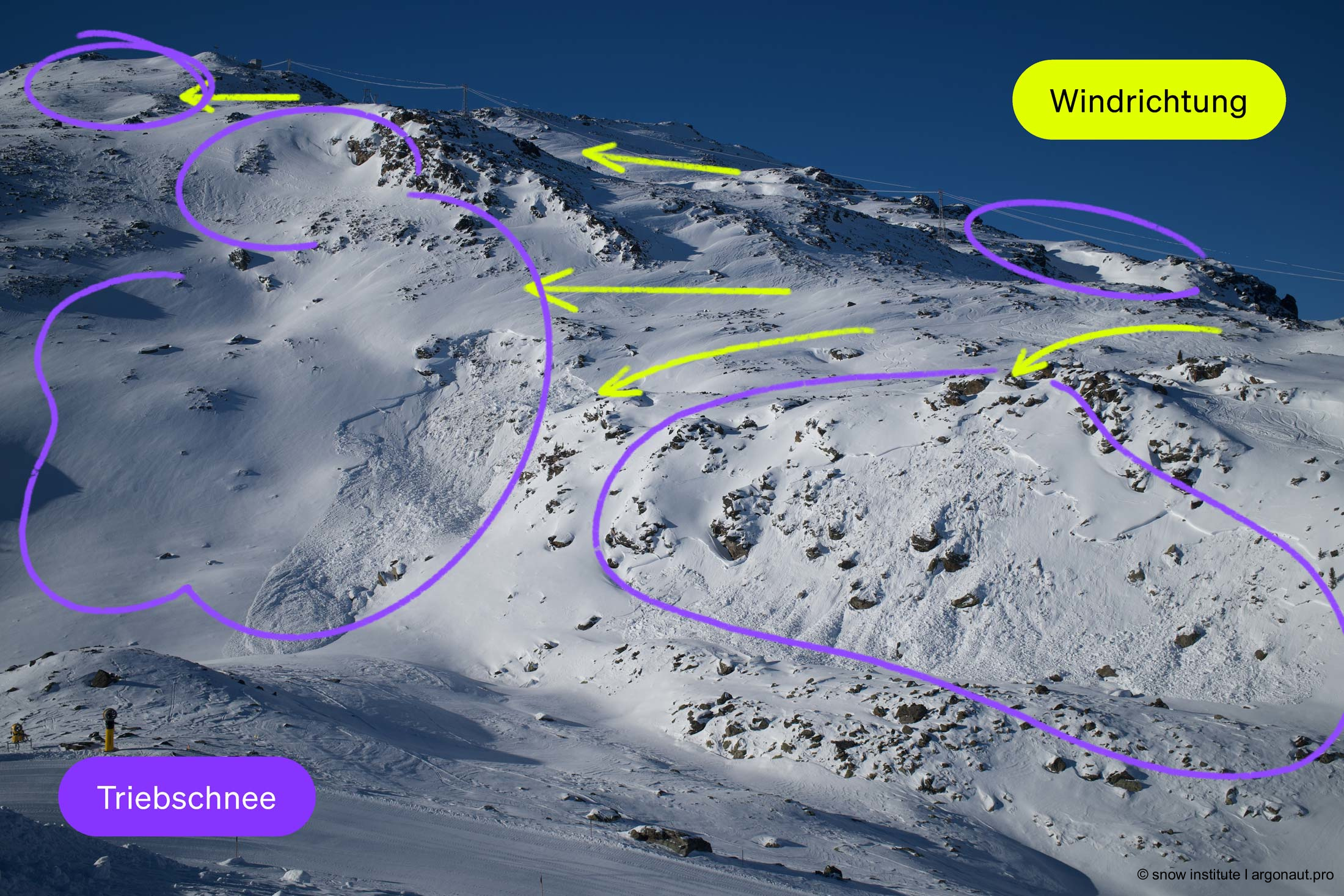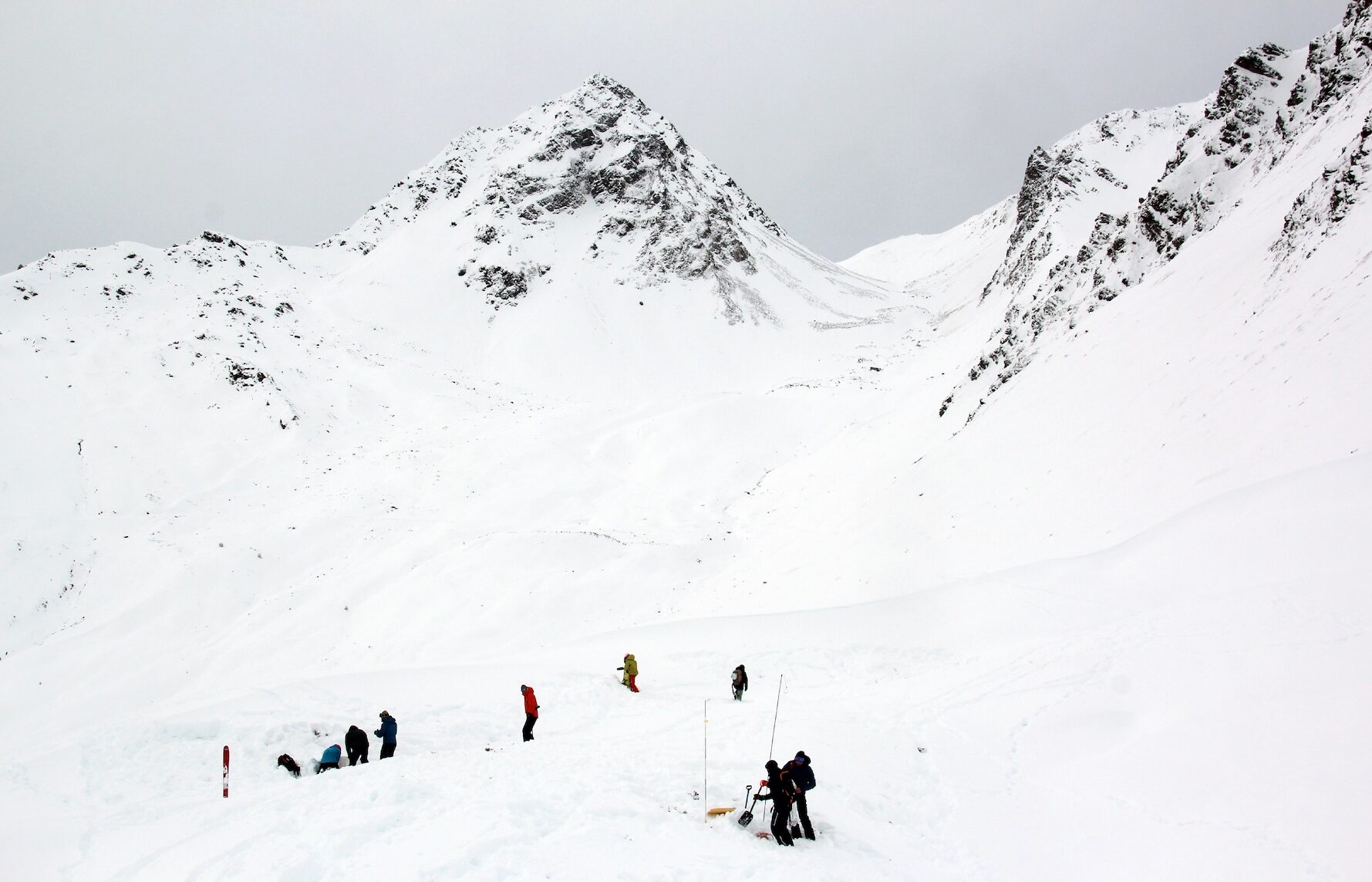
The difference between secured and unsecured ski areas
The secured ski area includes ski slopes and ski routes that are prepared and protected from alpine dangers by the ski area operator.
26.06.2023
The typical skier avalanche is around 50-70 meters wide and has about three times the flow length. The fracture depth (also known as the break-off height ) is around half a meter on average. Most people die in avalanches as a result of suffocation (approx. 57%) or fatal injuries (30%). As a general rule, the chances of survival decrease with increasing burial time.
You don’t have to die in an avalanche, and many avalanche accidents fortunately have a mild outcome, i.e. almost no consequences. However, freeriders often suffer serious or even life-threatening injuries. As soon as you are caught in an avalanche, you are a passenger and it is difficult to influence the outcome of this event.
It is therefore important to avoid an avalanche as far as possible and to always consider the consequences of an avalanche in the current situation (terrain traps, burial time, risk of injury, rescuing companions, flying weather, etc.).
Several components always come together in an avalanche accident:
This is why time – until the brain can be supplied with oxygen again – plays such an important role in an avalanche accident. Hypothermia, on the other hand, which is still frequently discussed, is of secondary importance, but can become an issue when waiting for the rescue services after being dug out(heat management!)
The “survival curve”, also known statistically as the “survival function”, shows the probability of still being alive in an avalanche over the course of a complete burial. It describes a gradual decrease in the probability of survival and allows the chances of survival during a complete burial to be divided into four phases:
During the first 15 minutes (max. 18 minutes) after a burial, the probability of survival remains high at around 90 percent. During this phase, around ten percent of accident victims die, mainly from fatal injuries.
This is followed by a steep descent. Approximately two thirds of all fully buried victims die from lack of oxygen in this phase.
From 35 minutes, only completely buried people with a sufficient oxygen supply survive. They are able to breathe in the snow, so their airways are clear. At best, they have a sufficiently large breathing cavity. Only a few buried victims die during the latency phase. The survival function therefore shows a very flat curve from 35 to around 90 minutes.
However, the chance of survival decreases again after the burial time (which roughly corresponds to the target time for an organized rescue). In this phase, three factors lead to death: severe hypothermia, lack of oxygen and an increase in carbon dioxide (due to the rebreathing of exhaled air).
In those cases in which buried persons have a so-called “breathing cavity”, i.e. a cavity in front of their mouth and nose or a connection to the outside air, it is even possible for them to survive a burial for several hours.
In summary, it can be said that only companion rescue offers a realistic chance of being rescued alive from the masses of snow. Avalanche airbags are a very useful addition to the standard emergency equipment (avalanche transceiver, shovel and probe), as they can prevent complete burial in many cases and make subsequent rescue easier.
A comparative analysis of the survival curves from 2001 and 2005-2013 reveals some differences: The earlier survival curves were published based on Swiss data, and the 2001 data set was more extensive. In view of this, it made sense to compare the data with that of other countries in order to determine whether there are similarities or geographical differences.
In 2011, Pascal Haegeli, Markus Falk et al. compared the survival curve from Switzerland with that from Canada. This study showed that the four phases of survival probability differed slightly, which was due to local factors:
Based on this investigation, the question arose as to whether there are differences in the survival curves between the individual Alpine countries that indicate possible climatic differences and whether there are differences in mountain rescue success. A comparison of the survival curve between Switzerland and Austria was therefore also carried out.
This survival curve is based on a retrospective analysis of all avalanche accidents during the winter seasons from 2005/06 to 2012/13 in Austria and Switzerland. The data for Austria was taken from the Alpine Police database, while the data for Switzerland was taken from the avalanche register of the WSL Institute for Snow and Avalanche Research in Davos. Only accidents involving people who were completely buried and for whom comprehensive information was available were taken into account in the analysis. In total, the data of 633 completely buried avalanche victims were analyzed, with 333 victims in Austria and 300 victims in Switzerland.
Haegeli P, Falk M, Brugger H, et al: Comparison of avalanche survival patterns in Canada and Switzerland. CMAJ 2011; 183: 789-95
Procter E, Brugger H, Falk M: Survival probability of avalanche burial
Procter E, Strapazzon G, Dal Cappello T, Zweifel B, Würtele A, Renner A, Falk M, Brugger H. Burial duration, depth and air pocket explain avalanche survival patterns in Austria and Switzerland. Resuscitation 2016; 105: 173-176.
Brugger, H., Durrer, B., Adler-Kastner, L., Falk, M., & Tschirky, F. (2001). Field management of avalanche victims. Resuscitation, 51(1), 7-15.

The secured ski area includes ski slopes and ski routes that are prepared and protected from alpine dangers by the ski area operator.

Snow is an exciting and unique material and we want children and young people to learn more about it and share their fascination with us.

With a little background knowledge and practice, every student can learn valuable measures to provide assistance on the ski slope in an emergency.

Emergencies and accidents rarely happen out of the blue without any warning. Of course, sometimes you can be unlucky and simply be in the wrong place at the wrong time.

In alpine winter sports, too, “danger” is often and regularly confused with “risk” and these two terms are often used indistinctly. This also applies to “avalanche danger” and thus the

As soon as the first snow falls, the motto is: grab your skis or board and make the first tracks of the season in the snow on the glacier or in the backcountry. Those who

More than half of all people involved in avalanche incidents suffer no or only minor injuries. Around 32 percent of the people involved are seriously injured, and the death rate of people who are buried (regardless of the burial depth) is around 13 percent.

Snow is a form of frozen water. It consists of many small ice crystals that form into snowflakes.
Topics
Legal information
All graphics, images and texts on the entire site may be downloaded and used in accordance with our rights of use.